A
B
C
D
E
F
G
J
H
I
J
K
L
M
N
O
P
Q
R
S
T
U
V
W
X
Y
Z
1425 F Street NW
312 Kennedy Street NW
1934 9th Street NW
1803 14th Street NW
829 14th Street NW
Included jazz and rock & roll groups like The Ink Spots and Coasters before the club changed its format.
824 14th Street NW
Classy supper club that opened in the late 1940s; the first place where DC group The Cap-Tans (formerly The Buddies) worked and performed often; national performers included the Ink Spots, Nat King Cole, and Louis Armstrong.
Pennsylvania Ave SE (Capitol Hill)
319 Pennsylvania Ave. SE
1218 U Street NW
1228 U Street NW
4850 Colorado Ave NW
800-804 14st Street NW
Performers included Ruth Brown, Roy Hamilton, Sarah Vaughan.
Upper 14th Street NW, Columbia Heights
1359 Connecticut Ave NW
1855 7th Street NW
From 1943-1950, replaced that year by Seven-Tee Restaurant.
1901 14th Street (around the corner from U Street)
1423-1425 U Street NW
Had ‘impressive roster of jazz and blues acts’; performers included The Ravens; operated from 1943-1963.
2001 11th Street NW (11th & U St.)
The Cap-Tans (formerly The Buddies) worked and performed there often. Club was also frequented by many of Washington’s elite at the time who would come to see such musical artists as Cab Calloway and DC native Duke Ellington. In the 1950s, the club’s name was changed to Crystal Caverns and then to Bohemian Caverns. In 1959, promoter Tony Taylor and Angelo Alvino bought the club and transformed it into the premier jazz venue in Washington, D.C. Taylor booked many of the leading jazz musicians of the 1960s including Bill Evans, Miles Davis, Shirley Horn, John Coltrane, Eric Dolphy, Bobby Timmons, Nina Simone, and Charles Mingus. In 1964, Ramsey Lewis recorded the critically and commercially successful album, The Ramsey Lewis Trio at the Bohemian Caverns.
1914 13th Street
727 H Street NE
2204 14th Street NW
Short-lived club on outskirts of U. Street; described as “notorious.”
486 K Street NW
During the 1950s, one of the club’s “top attractions” was DC’s own Don Covay.
16th Street and Benning Road NE
3102 Mount Pleasant Street NW
5200 Foote Street NE
Also known as Barnett’s Cafe (now the Riverside Center, across from Marvin Gaye Park) — the historic site of Marvin Gaye’s professional singing debut.
The Cap-Tans (formerly The Buddies) performed there often.
1409 H Street NW
DC group The Winstons performed here. Best known for their 1969 hit, “Color Him Father.”
1940 9th Street NW
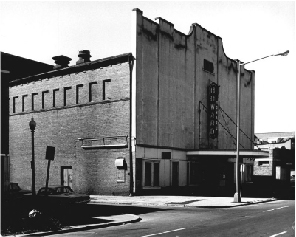
620 T Street NW
Opened for business on August 22, 1910. Some local talent to perform at this theatre from the 1940s to 1960s included The Clovers, and Billy Stewart, in addition to other stars like Little Richard, The Drifters and The Coasters. Behind The Howard Theatre is also where Marvin Gaye’s doo- wop group The Marquees had a chance audition for Harvey Fuqua of The Moonglows. The audition turned out well because The Marquees then became Harvey Fuqua & The New Moonglows. On April 29, 1977, during a time when The Howard Theatre was having intermittent shows, there was one-time R&B vocal group concert featuring The Jewels, The Spaniels, The Clovers, and The Rainbows.
913 11th Street SE
One of the many R&B performers was DC’s own Don Covay.
N.E. DC
Opened in 1959; the club’s live entertainment included a variety of blues and jazz music. Was owned and operated by jazz singer Jimmy McPhail.
1211 U Street NW
Replaced by the Casbah Restaurant; during 1952 to 1957 when the restaurant was named The Marina, one local act that performed was Calvin ‘Hound Dog’ Ruffin & His Band.
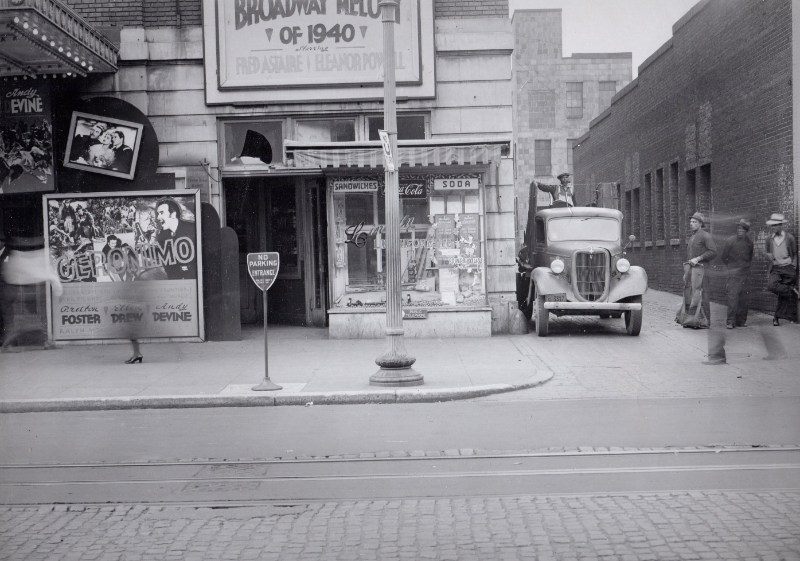
An underground ballroom underneath Lincoln Theatre’s back parking lot (operated from 1923-1956, featured a variety of local & national jazz bands).
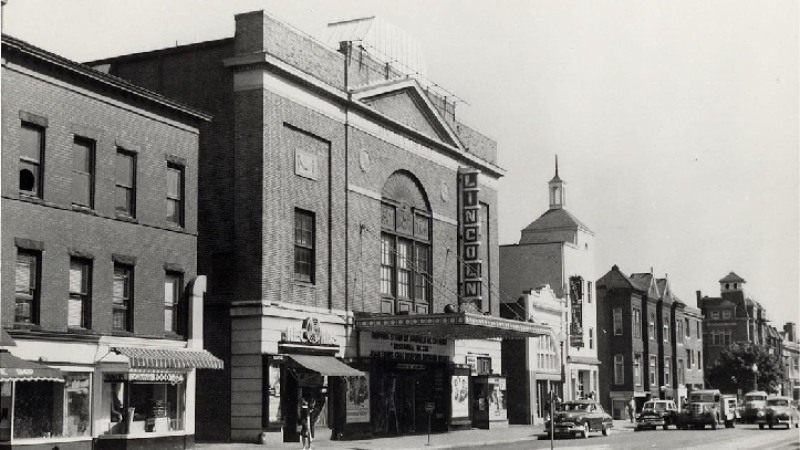
1215 U Street NW
Located on ‘Washington’s Black Broadway’, served the city’s African American community when segregation kept them out of other venues. The Lincoln Theatre included a movie house and ballroom, and hosted jazz and big band performers such as Duke Ellington.
727 14th Street NW
National artists who performed included Brook Benton and the Will Mastin Trio (which featured Sammy Davis, Jr.).
Southwest Corner of 10th & U Streets NW
(2 addresses: front door – 1008 U St. NW; side door – 1930 10th St. NW) | 6th floor was used as a nightclub.
1508 14th Street NW
1122 Bladensburg Road NE
In 1959, Jimmy McPhail bought the Melody Inn, where he had been performing regularly. From that year into 1997, he operated it as Jimmy McPhail’s Gold Room, featuring many of the best-known names in blues and comedy.
L Street near 14th
The Merry-Land opened in 1941. Through the 1940s, it was one of DC’s top jazz clubs featuring Pearl Bailey, Earl “Fatha” Hines, and frequent performances by DC’s own Jimmy McPhail. Billie Holiday also came to hear the entertainment, though it was against the Jim Crow laws of the day.
407 11th Street NW
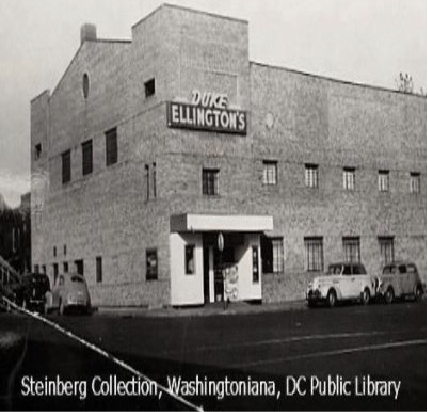
815 V Street NW
Performers included Ella Fitzgerald, Cab Calloway, Lionel Hampton and his Orchestra. (Now the home of the 9:30 Club).
501 13th Street NW
Located in the basement of The Earle Theatre which became The Warner Theatre in 1947.
1849 7th Street NW
Opened in 1942, lasted 15 years. Bill Harris (Clovers’ guitarist) worked here at one time.
1848 7th Street NW
Near T Street, was called “an after-hours joint.”
901 R Street NW
Owned by local jazz pianist Louis T. Thomas.
931 10th Street NW
1218 11th Street SE
Hamlin Street NE
PigFoot, a blues and jazz club (owned by Bill Harris, guitarist for The Clovers from 1950-1958), was a showcase not only for Harris, but for other local musicians. Late pianist John Malachi held weekly jazz workshops, and big-name stars used to drop by to unwind in a homey setting.
1414 Eye Street NW
409 10th Street NW
1355 U Street NW
‘Floor shows’ Friday through Sunday from Group Harmony Book.
1300 Rhode Island Avenue NE
Included jazz club, The Spotlite Room (formerly The Celebrity Room/Cafe Celebrity) performers included The Clovers, Art Blakey & the Jazz Messengers, Julian “Cannonball” Adderley.
1200 New York Avenue NW
The Winstons performed here.
2477 18th Street NW
The Showboat Lounge boasted performers like The Charlie Byrd Trio and the Shirley Horn Trio.
14th & T Street
1419 Irving Street NW
1357 U Street NW
513 13th Street NW
Multi-use 1924–1989, concert venue from 1989 – Downtown – large concert hall.
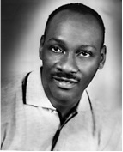
WOOK
One-time host of Quality Music’s “goldfish bowl” studio on the sidewalk. Jefferson also had a popular Saturday show called Teen-o-Rama from 7- 9pm, which he let young people host and share information about social events, like where the next sock hop would be. Jefferson was co-creator of the “Teenarama Dance Party” on WOOK-TV, which was the nation’s first black television station. The program was produced and broadcast live six days a week from the studio of WOOK-TV in Northeast Washington, DC. The show ran from March 7, 1963 to November 20, 1970.
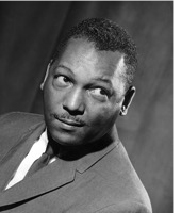
WOOK
Bob King began his radio career on WRAP in Norfolk, Virginia in the 1950s. He was recruited in the late 1950s by WOOK producer, Tex Gathings as a DJ for the popular station in Washington, DC. Bob King became one of the most noted radio DJs in Washington, DC area during that time. From 1963-1965, Bob King hosted the popular African American teen television dance program, “The Teenarama Dance Party” on the new WOOK-TV. He was the most celebrated host of the groundbreaking dance program, which ran from 1963-1970.
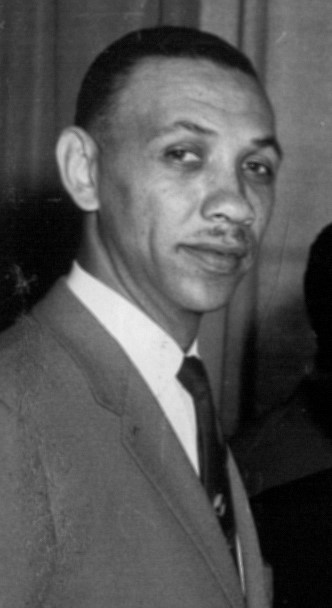
WOOK
Cliff Holland began his radio career on WOOK-AM in Washington, DC in 1947. He was known to host radio programs during the morning, afternoon and evening hours. One of his most popular radio shows was the “Afternoon Dance Party”. Later in his career at WOOK, he was appointed Music Director, then Program Director for the station. Cliff Holland also served as Vice President for the United Broadcasting Network making him one of the first African Americans to serve as Vice President of a broadcast network. He retired from WOOK-Radio and Television after a 35-year career.
WMAL
Grant was recognized for his distinctive voice, sophisticated style, and personal connection to many of the 20th century’s jazz greats. He was responsible for works connected to Duke Ellington, namely discovering and marking Ellington’s birthplace at 2129 Ward Place, N.W.; renaming Western High School, Duke Ellington High School (now, the Duke Ellington School of the Arts), and for renaming the Calvert Street Bridge the Duke Ellington Bridge in 1974. Later, in 1985, “Felix Grant Day” was proclaimed; also, a music-radio library was named after him at the University of Jamaica.
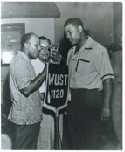
WINX, WANN & WOOK
By the mid-1940’s, he hosted The House That Jack Built, a program of and on three DC/Maryland radio stations (WINX, WANN, and WOOK). At WOOK, he spun “race records,” as songs by black artists were then known, during morning drive time on WOOK. (Hal Jackson had broken through the color barrier in radio in the DC area in the 1930s, becoming the first black to host a show on WINX in Maryland after initially being told that no black person would ever be on its airwaves. His show was called “The Bronze Review,” which featured entertainment, interviews, and news. Unbeknownst to WINX management, “bronze” was then the classy term for “negro” in Washington’s black community.) Alongside fellow WOOK DC Tex Gathings, Jackson co-hosted the first television show ever produced from The Howard Theatre” called “Marvin’s Howard Theatre Amateur Program.” In 1990, Hal Jackson was the first minority inducted into the National Association of Broadcasters’ Hall of Fame. In 1995, he became the first African-American inducted into the National Radio Hall of Fame.
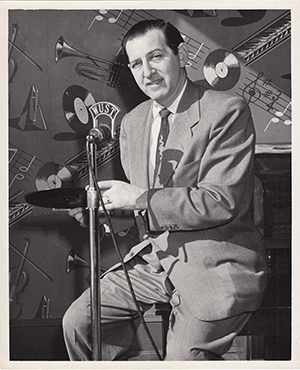
WWDC-FM (as well as WUST, WOL & WINX)
R&B enthusiast DJ – known as “Mayor of Connecticut Avenue” – who promoted local R&B at a time when it was difficult for black artists to find a broadcast outlet. He also hosted a weekly amateur talent show at the Republic Theatre, giving a boost to a number of local musicians, including Pearl Bailey and her husband, Louie Bellson. His talent-show discoveries included the Clovers, out of Armstrong High School, who would go on to record several hits, including “Devil or Angel,” “Blue Velvet” and “Love Potion No. 9.” Additionally, the Armstrong Four which included Jimmy McPhail. Lowe connected black artists to his friend Ahmet Ertegun, who often bought records at Waxie Maxie’s record shop.
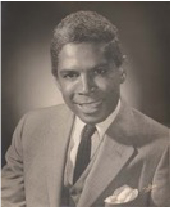
WUST
WUST’s most famous DJ in the mid-1950s – was one of the first people to introduce R&B to the city of Washington. D.C. DC native Harold Bell said Bandy played music by The Orioles, The Flamingos, and The Spaniels (“You Gave Me Peace of Mind”). Fans on the street would watch Bandy broadcast from the window and dance to the music. (The native Jamaican was known for broadcasting with a faux British accent.)
WOOK & WWDC
Hosted daily “Uptown Special” Monday-Friday 6-10am and Sundays 6am- 12noon on WOOK, 26 hours per week)
Unsure of Station
Played The Cap-Tans. The Cap-Tans appeared on the radio show of deejay Paul Chapman, joining him in a rendition of “Coo-Coo Jug-Jug (That’s the Sound of the Birds)”. Chapman was so impressed with the broadcast that he enlisted the group in a recording of the song, backed by his composition “You’ll Always Be My Sweetheart”, which was released on DC Records in June 1949.
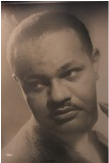
WOOK
One of the first black DJs in Washington (jazz only). In the late 1940s, Gathings was the primary of “the first television show ever produced from The Howard Theatre,” called “Marvin’s Howard Theatre Amateur Program.” Gathings hosted the program alongside fellow DJ Harold Jackson. According to Gathings, some of DC’s elite musicians like John Malachi, Dee Dee Clark and Al Dunn served as music coordinators for the talent show.. The short-lived program aired on channel 5, Dumont Television.
1928 14th Street NW
4802 Deane Ave. NE
907 U St. NW
“If it’s been cut we have it.”
1545 7th Ave. NW and 2403 Benning Rd., NE
407 L St.
1003 U St. NW
231 Florida Ave. NW
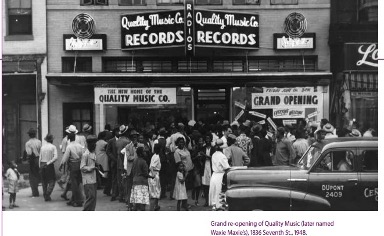
1836 7th St. NW
1112 Colonel Rd. NW
1545 7th St. NW (Same location as Langstow Radio and Record Store)
1233 U St. NW and 718 4th St. SW and 1715 1/2 7th St. NW
2131 Georgia Ave. NW
409 Florida Avenue, NW
1839 7th St. NW
Source: p. 112, Stuart L. Goosman, Group Harmony: the Black Urban Roots of Rhythm & Blues 2005
In 1965, the Sonderling Broadcasting Corporation bought WOL and changed the format from easy listening to rhythm and blues. That year, WOL also became the first rhythm and blues station in Washington to have public affairs programming.
“No other medium in the city had WOL’s influence and credibility among black Washingtonians from 1965 to about 1975…With finger-popping, hand-clapping and foot-stomping, they were the broadcasters of gospel-influenced, inner city culture,” The Washington Post observed. WOL helped popularize “Chocolate City” as a nickname for Washington, according to the Post.
During the 1960s and 1970s, WOL was home to Petey Greene, a former convict turned popular talk show host, comedian, and activist, who began his professional broadcasting career at WOL. His life was an inspiration for the 2007 film, Talk To Me.
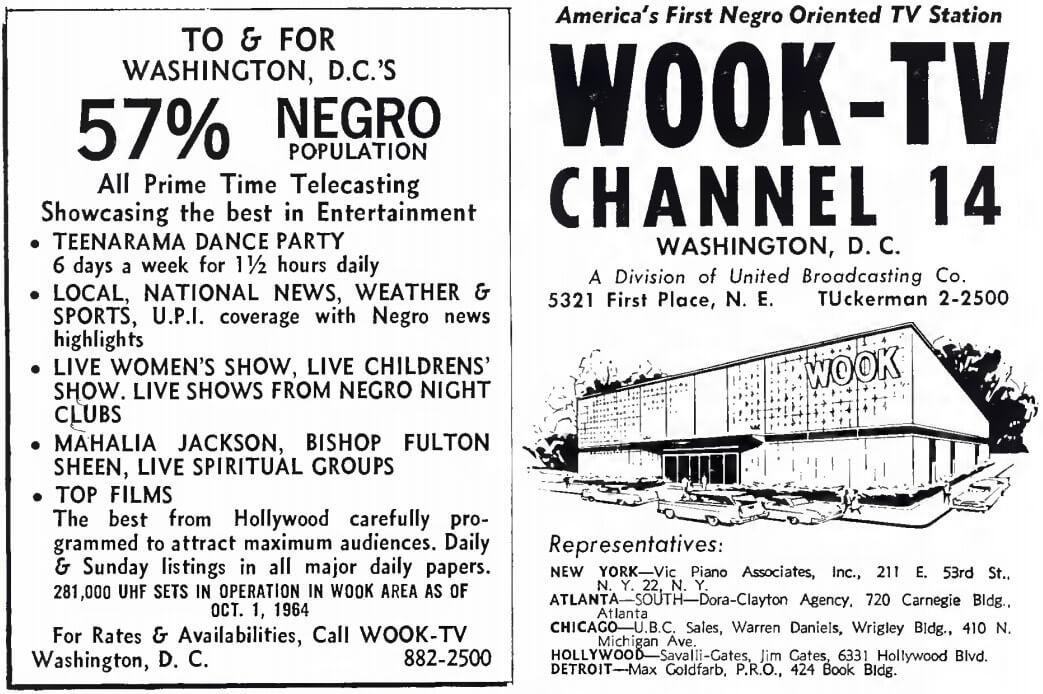
In 1947, WOOK AM was launched in Washington, D.C. by Richard Eaton as the first U.S. broadcast radio station to feature African-American broadcasters serving African-American audiences.
Originally located at 1580 on the AM dial, the station swapped call letters and channels with WINX AM, moving to 1340 AM in 1955. WOOK-AM disc jockeys used to broadcast nightly from a glass booth in the front window of the record store, Waxie Maxie’s, on 7th and T streets NW.
According to the ‘Stepfather of Soul’ blog, WOOK-AM battled with WUST AM and WOL AM during the classic soul era for dominance of D.C.’s airwaves until 1975.
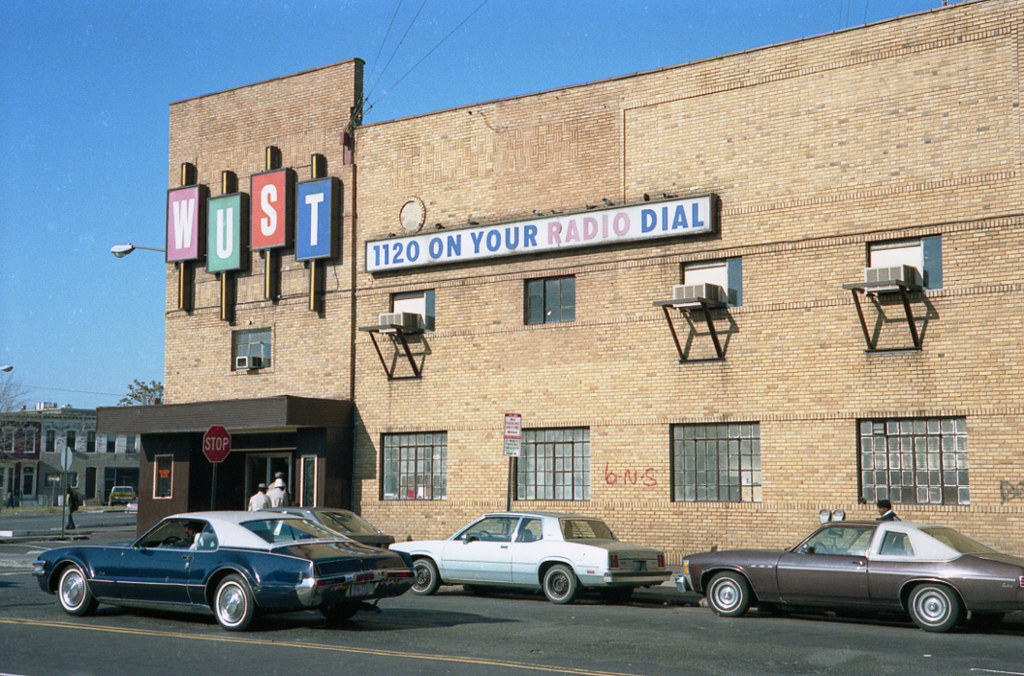
WUST first signed on in 1947 as WBCC, licensed to the Washington, DC suburb of Bethesda, MD, with 250 watts of power, broadcasting in the daytime only. It had been a rhythm and blues station. Its call letters came from its studio location at 1120 U Street, NW, later moving to 815 V Street NW, site of today’s 9:30 Club.
During the 1950’s, DJs Lord Fauntleroy Bandy and “Terrible” Thomas popularized R&B music with high school students, weaning them from Top 40. Part of the appeal of WUST was its location in the red light district of the time.
During late August 1963, the ballroom of the WUST studio served as the operations headquarters for the August 28th March on Washington for Jobs and Freedom
DC Soul singer Billy Stewart (“Sitting in the Park”, “I Do Love You”) and his younger brothers Johnny, James, and Frank – known as the Four Stewart Brothers – had their own radio show every Sunday for five years at WUST-AM.
Started in 1945. At one point, it was one of only six stations in the city, and Washington’s only 24-hour station. WWDC catered to white audiences during the day but, according to WWDC jazz host Felix Grant, it “became essentially a black station, playing jazz and rhythm and blues and the rest.” Mr. Grant said: “The nighttimes were great.”
Host Jack Lowe (who was white) called WWDC “the first station in Washington to play rhythm & blues on a regular basis.” Lowe hosted a popular show called “WWDC Amateurs” turned “Jackson Lowe’s Amateurs”, which aired every Sunday 12:30pm-1:30pm for eight straight years (c. 1942-1950). Frequent performers included the group that became The Clovers. As a matter of fact, the vocal group met Harold Winley, who would become their bass singer, by participating in the amateur show.